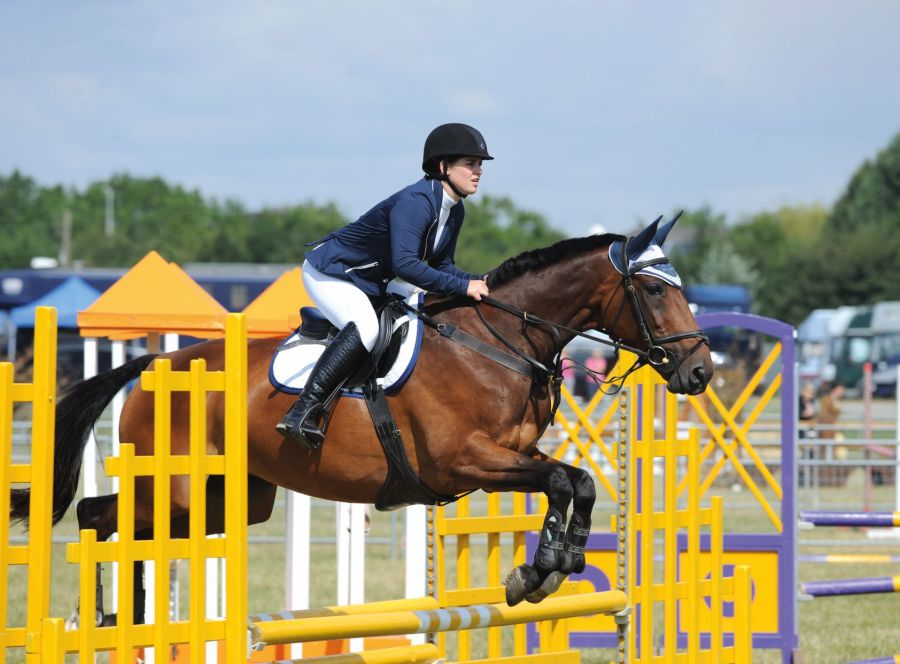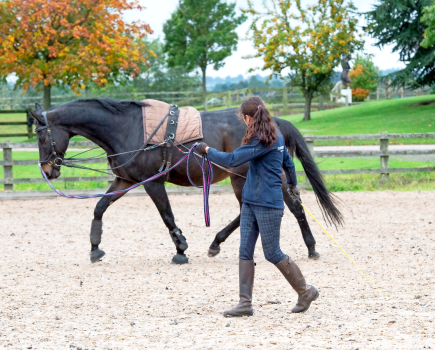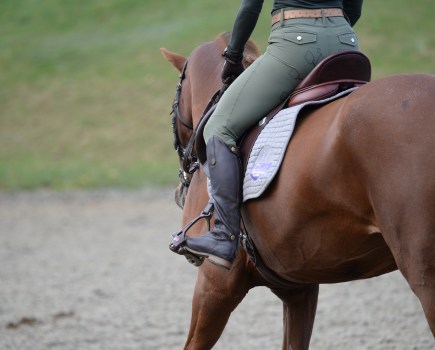Outdoor competitions are back in our diaries as we gallop into spring here in the UK, which means jumping on grass. After a long winter of competing indoors and on all-weather surfaces, riding on grass can feel alien. In fact, you may even find it triggers a flutter of nerves.
“Perhaps it’s the eventer in me, but I’m all for doing as much jumping on grass as you possibly can,” says two-time Olympic medallist Tina Cook. “Think about it. If you want to put in your best performance, you should try and model training conditions as closely as you can on competition.
“If you arrive at an outdoor show in any discipline with no idea how your horse will go on grass, you’ve only partially prepared.
“It’s especially pertinent because most horses will feel noticeably different when you move from a stable, consistent arena surface to grass,” continues Tina.
“Some will become better and bolder — like Miners Frolic, my double Olympic team medallist and world champion — while others will feel like a fish out of water.
“Ground conditions are ever-changing depending on rainfall, so it makes sense to train outside the arena as much as you can to experience the full spectrum.”
Slipping on soft ground
According to Tina, horses who are unsteady on soft going are usually the ones who aren’t prepared.
“Your horse needs to be mentally familiar with working in muddy conditions, plus develop adequate muscle tone to ensure they’re balanced while jumping on soggy terrain,” she explains.
“If you don’t have a field to practise in, make the most of soft ground out hacking. Don’t avoid muddy tracks; embrace them. The better prepared your horse is, the less they will slip, reducing the risk of injury.”
Tina adds that you can improve your horse’s confidence when jumping on grass by being a more independent rider. This means maintaining balance in the saddle without holding on to their head.
If you need to use the reins to hold your balance, for example (especially when riding in a light seat), this isn’t an independent seat and impedes your horse’s movement.
“The key is finding a rein length that allows you to balance while the horse is free to use their neck,” says Tina.
Worrying about hard ground
“Jumping on grass in summer comes with compromises,” says Tina. “While firmer ground might help you achieve a faster round, it also means repetitive concussion, which can cause problems for your horse such as bruising.
“That’s why I won’t run horses frequently if we haven’t had rain. Instead, pick a handful of priority competitions on grass, swapping other planned outings to venues which have a surface to preserve your horse.”
Muddy take offs and landings
Churned-up approaches to a fence encourage horses into a deeper take-off spot and can lead to hitting fences. Consequently, showjumps start to fall or you run the risk of an injury when tackling sturdier cross-country fences.
How you ride in these conditions is key to successfully jumping on grass.
“Keep the power up with a closed leg and your shoulders back; slow your horse on the run-up to the fence to give them plenty of time to assess the situation, which should stop them chipping in,” advises Tina.
“Don’t worry about the time; you can make that up between fences.”
Lacking confidence
If you find that the thought of jumping on grass gives you butterflies, Tina recommends tackling the issue by doing as much jumping on grass in training as you can.
“If the opportunity to train on grass arises, especially after rain, take it,” she confirms. “Once you feel comfortable trotting, then canter. When you feel in control of the canter, jump. Avoid jumping your maximum height until you’re ready.
“Competing on grass will always be more precarious than on a dedicated all-weather surface. You need to convey confidence to your horse. Therefore, don’t over-face yourself, ride forward without rushing them and use the practice fences a couple of extra times to settle you both.”
Studs
When we jump on slippery ground, we’re responsible for our horses’ safety. No rider wants to endanger their horse mentally or physically.
“If they start to hesitate, chip in or refuse on grass and you want to continue competing, I believe shoes and studs are important,” says Tina.
“There’s no easy answer if you feel barefoot is best, particularly if your horse struggles to jump on grass without shoes. Fortunately, nowadays riders can compete all-year round on a surface, so you never have to jump on grass if it isn’t right for your horse and their management.”
Main image © Your Horse Library/Kelsey Media Ltd. Please note, Tina Cook is not pictured.









